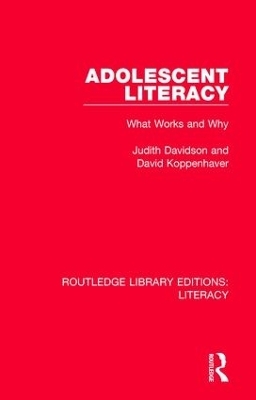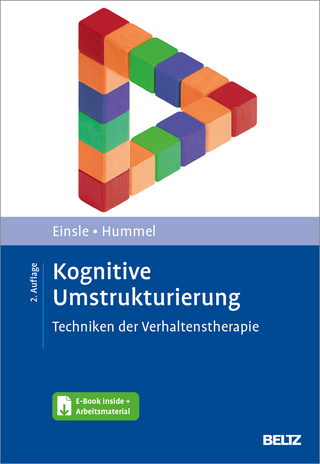
Adolescent Literacy
What Works and Why
Seiten
2019
Routledge (Verlag)
978-0-8153-7360-5 (ISBN)
Routledge (Verlag)
978-0-8153-7360-5 (ISBN)
Originally published in 1988. Through case descriptions of literacy programs situated in formal and informal settings, this book draws attention to the ways that developmental appropriateness and engaging literacy instruction can assist youth in reaching their full potential as readers and writers.
Originally published in 1988. Much has changed since then in schools. Mobile technologies, interactive whiteboards, digital texts, class websites, student-authored blogs, social networking and photo sharing sites found integrated into so many classrooms hadn’t even been imagined by most educators.
What hasn’t changed, however, are the developmental needs of adolescents. A sense of competence, opportunities for creative expression, positive social interactions, and opportunities for self-definition remain centrally important. Similarly, print literacy (i.e., reading and writing with traditional orthography) continues to contribute strongly to academic success, employment opportunity, health, and life satisfaction.
Consequently, this book remains very relevant today. Through case descriptions of literacy programs situated in formal and informal settings, the book draws attention to the ways that developmental appropriateness and engaging literacy instruction can assist all youth in reaching their full potential as readers and writers.
Originally published in 1988. Much has changed since then in schools. Mobile technologies, interactive whiteboards, digital texts, class websites, student-authored blogs, social networking and photo sharing sites found integrated into so many classrooms hadn’t even been imagined by most educators.
What hasn’t changed, however, are the developmental needs of adolescents. A sense of competence, opportunities for creative expression, positive social interactions, and opportunities for self-definition remain centrally important. Similarly, print literacy (i.e., reading and writing with traditional orthography) continues to contribute strongly to academic success, employment opportunity, health, and life satisfaction.
Consequently, this book remains very relevant today. Through case descriptions of literacy programs situated in formal and informal settings, the book draws attention to the ways that developmental appropriateness and engaging literacy instruction can assist all youth in reaching their full potential as readers and writers.
Judith Davidson, David Koppenhaver
Foreword. Introduction to the Second Edition 1. Adolescent Literacy Today 2. Methodology 3. The Kenosha Model: Academic Improvement through Language Experience 4. STAR: Structured Teaching in the Areas of Reading and Writing 5. HILT: High Intensity Language Training – An Effective Model of Second-Language Literacy Instruction 6. After-school literacy Programmes for Young Adolescents 7. Summer Literacy Programmes ofr Young Adolescents 8. Special Findings 9. What Works and Why 10. Translating What Works into Programmes and Policies. Appendix. Annotated Resource List
| Erscheinungsdatum | 14.06.2019 |
|---|---|
| Reihe/Serie | Routledge Library Editions: Literacy |
| Verlagsort | New York |
| Sprache | englisch |
| Maße | 138 x 216 mm |
| Gewicht | 453 g |
| Themenwelt | Geisteswissenschaften ► Psychologie ► Allgemeine Psychologie |
| Geisteswissenschaften ► Psychologie ► Entwicklungspsychologie | |
| Geisteswissenschaften ► Psychologie ► Verhaltenstherapie | |
| Sozialwissenschaften ► Pädagogik ► Schulpädagogik / Sekundarstufe I+II | |
| ISBN-10 | 0-8153-7360-0 / 0815373600 |
| ISBN-13 | 978-0-8153-7360-5 / 9780815373605 |
| Zustand | Neuware |
| Haben Sie eine Frage zum Produkt? |
Mehr entdecken
aus dem Bereich
aus dem Bereich
Techniken der Verhaltenstherapie
Buch (2024)
Julius Beltz GmbH & Co. KG (Verlag)
35,00 €


